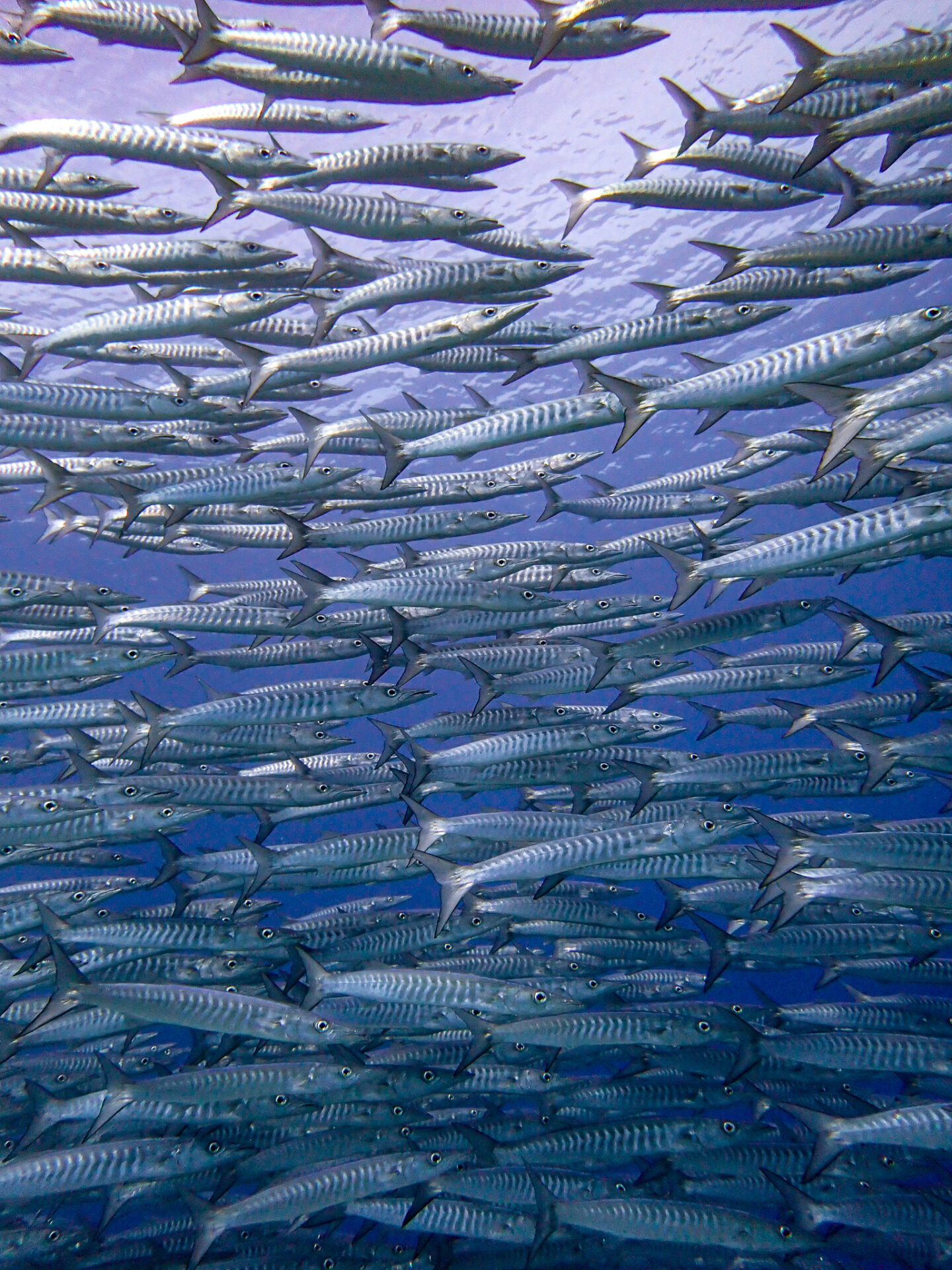Siquijor, a relatively small and unassuming island in the Philippines, often escapes the limelight compared to its more famous neighbours like Dauin and Bohol. However, what it lacks in size, it more than compensates for with its mesmerizing marine life. Siquijor Island is a hidden gem for divers and marine enthusiasts, offering a world of wonders beneath its azure waters. In this article, we’ll dive into the depths of Siquijor’s oceans to explore the captivating marine life that awaits you.
Siquijor’s Unique Location
The Philippines is the apex of The Coral Triangle- often referred to as the “Amazon of the Seas,”. This is a vast marine region in Southeast Asia that spans Indonesia, Malaysia, Papua New Guinea, the Philippines, Solomon Islands, and Timor-Leste. This region is celebrated for its extraordinary marine biodiversity, hosting a remarkable variety of coral species, fish, and other marine life, making it a global hotspot for conservation and a critical area for the health of our oceans.
Nestled in the heart of the Philippines in the Bohol Sea, Central Visayas, Siquijor Island is strategically located in a region known for its diverse and vibrant marine ecosystems. The surrounding waters are home to a wide variety of fish, coral species, cetaceans and other marine organisms, making it a prime destination for underwater exploration. The waters around Siquijor reach abyssal depths of more than 1,000 m making them a rich feeding ground for countless species of marine life.
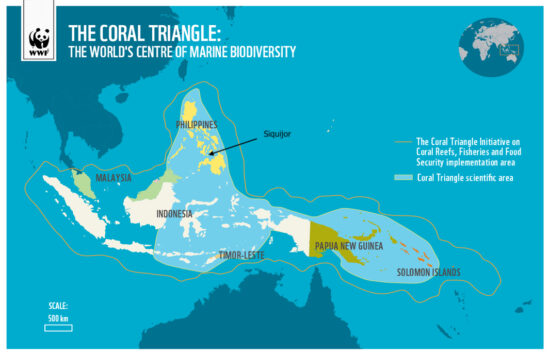
Incredible Biodiversity
The waters around Siquijor Island are a haven for marine biodiversity. Divers and snorkellers are treated to a stunning array of fish species. From the charismatic clownfish hiding amidst the anemones to the majestic schools of giant trevally.
Marine reptiles green and hawksbill turtles glide gracefully through the water while banded sea kraits (sea snakes) investigate the shallow reef crevices for their next meal. Crustaceans such as shrimps and crabs, and holothurians such as sea cucumbers eat the leftover scraps of food keeping the reef clean.
Cephalopods (meaning ‘head ‘foot’) like the mimic octopus hide in their sandy burrows while giant reef cuttlefish exhibit impressive camouflage skills while stalking their prey. Other members of the mollusc family such as tiny vibratly coloured nudibranchs slowly navigate the reef, while the giant triton snail keeps the crown of thorn sea star population in check.
One of the island’s unique attractions is the resident population of blacktail barracuda and black tip reef sharks at Tulapos Marine Protected Area. Divers and freedivers from all around the Philippines flock to the region to witness these captivating creatures in their natural habitat.
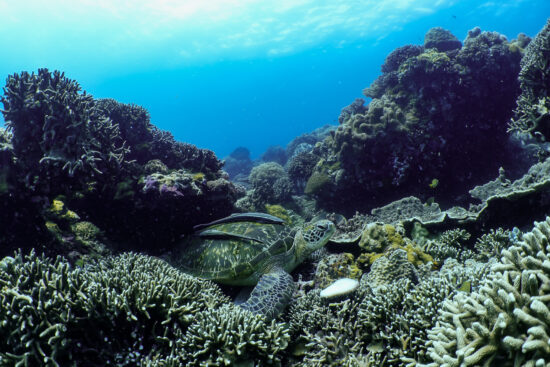
Diverse Coral Gardens
One of the island’s primary attractions for divers and snorkelers alike is its rich coral gardens. Coral reefs are intricate, underwater ecosystems formed by colonies of tiny animals known as corals, which secrete calcium carbonate to create iconic colourful structures that become the coral reef. Their symbiotic microscopic algae called ‘zooxanthellae’ gives the coral its breathtaking colours.
These vibrant and delicate environments serve as essential habitats for a wide array of marine species, playing a crucial role in the health and balance of our oceans. More than 25% of all marine life rely on coral reefs as a nursery habitat. The marine life around Siquijor is greatly enhanced by the presence of these beautiful and intricate underwater ecosystems.
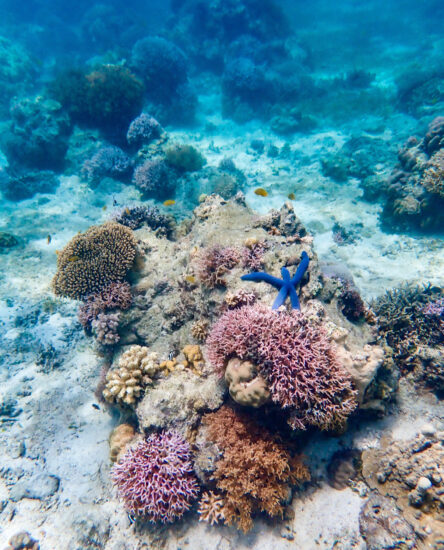
Secret Underwater Meadows
One of the more overlooked marine habitats that make up Siquijor’s incredible plethora of marine life is the seagrass beds. These vast underwater fields of swaying grasses are one of the most important ecosystems in the entire world. Seagrass is not only the only flowering plant on the planet that can survive submerged in seawater, they are 35 times more effective at absorbing carbon from the atmosphere than rainforest!
Seagrasses are becoming the rising star in the fight against climate change. They also provide a nursery habitat for commercially important fish species and hold the sediments together with their roots reducing coastal erosion. Among many other benefits, seagrass beds make a stunning place for snorkelling and diving and are scattered around the island for visitors and locals to enjoy.

Macro Paradise
If you’re a fan of macro photography and have a keen eye for tiny creatures, Siquijor is a dream come true. It truly is the most up-and-coming macro diving destination in the country. All the most popular tiny critters that make other macro destinations famous can be found here in Siquijor.
From muck diving favourites such as sheep nudibranchs, flamboyant cuttlefish, and ambon scorpionfish, to ornate ghost pipefish, blue ring octopus, mandarin fish and frogfish- Siquijor has it all! Exploring the newly discovered muck diving sites in Siquijor can yield some of the most breathtaking macro shots for underwater photography enthusiasts. And the great thing is- it’s not busy with divers yet! Bahura Dive Siquijor is the hub of macro and muck diving in Siquijor with experienced dive guides who know where to find the most elusive critters.
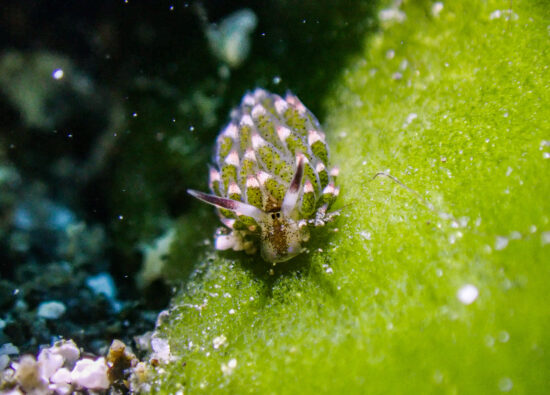
Into the Blue
As well as Siquijor’s coastal marine habitats, there’s no denying that there are rich populations of marine species that inhabit the surrounding waters. The area of the Bohol Sea on the Lazi side of the island has one of the highest records of whale and dolphin sightings in the country.
Pods of spinner dolphins show off their spinning skills as they leap from the water, while majestic short-finned pilot whales cruise along the surface taking deep breaths in preparation for their next deep dive to find squid. During the boat ride to the next dive site flying fish glide above the water’s surface and the oceanic manta rays breach the surface in an impressive display before crashing back down to the water.
Offshore shoals such as Daquit Shoal and Sunken Island are an oasis of life in the blue making them a mecca for school fish, turtles and visiting sharks and eagle rays. Some lucky divers are even graced with the occasional visit from the gigantic whale shark!
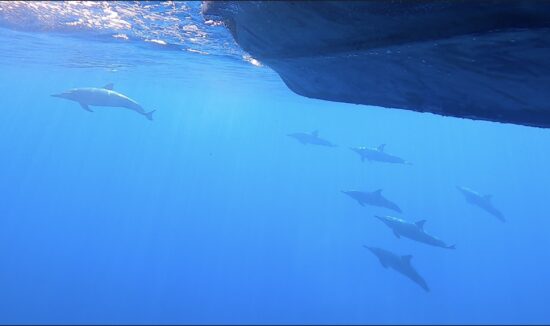
Conservation Efforts
Efforts to protect the marine life around Siquijor Island are actively underway. The local government units, in collaboration with various organizations and diving communities, are committed to preserving this underwater paradise. Marine sanctuaries and MPAs (Marine Protected Areas) are scattered around the island to protect parts of the coastal areas from overfishing. Visitors are encouraged to practice responsible diving and snorkelling by respecting the delicate ecosystems, not touching or disturbing the marine life, and supporting local marine conservation initiatives. Marine sanctuary fees are collected from divers and snorkellers to help maintain the monitoring efforts and support local jobs.

Discover Siquijor’s Underwater Paradise
Siquijor Island offers a captivating underwater world that’s every bit as enchanting as its lush landscapes. With an abundance of coral reefs, a wide variety of marine species, and unique macro critters, this small island in the Philippines is a diver’s paradise.
Beyond the natural beauty, Siquijor’s marine conservation efforts make it a destination that not only allows us to appreciate its wonders but also inspires us to protect them. So, the next time you’re planning a diving adventure, consider the enigmatic marine life of Siquijor Island, where a world of underwater marvels awaits.
Get in touch with Bahura Dive Siquijor to plan your visit and find out what awaits you on your next diving adventure.


